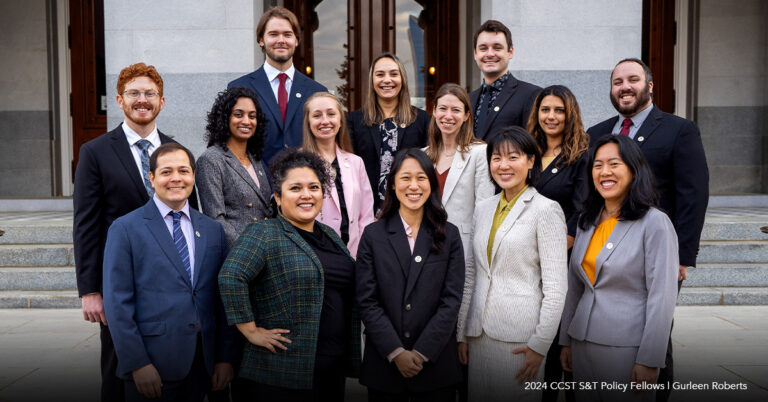Update: Applications for the CCST Science & Technology Policy Fellowship Have Closed
CCST Releases Summary of Cal TAC Digital Media Workshop
July 20, 2012 | CCST Newsroom, Press Releases | Contact: M. Daniel DeCillis
 Using digital media to improve teaching and learning is essential to the classrooms of the 21st century. However, many challenges must be overcome in order to fulfill the potential of digital education in California, as the members of the California Teacher Advisory Council (Cal TAC) discussed in a recent meeting.
Using digital media to improve teaching and learning is essential to the classrooms of the 21st century. However, many challenges must be overcome in order to fulfill the potential of digital education in California, as the members of the California Teacher Advisory Council (Cal TAC) discussed in a recent meeting.
Cal TAC is a group of master teachers formed in 2005 by CCST. Cal TAC was intended as a means for bringing real-world classroom experience to policy makers and others whose decisions affect the quality of science and math education in California.
In a series of “How To” workshops in 2012, CCST, Cal TAC members, and their partners are exploring ways to move digitally enhanced education forward in California in a consistent, viable, and measurable way that keeps improved teaching and learning outcomes front and center. A newly released summary report of the workshop which took place on April 20, 2012 explored what technology can offer to improve education inside and outside the classroom walls. Participants also had an opportunity to share their own successes and frustrations using technology in the classroom.
The workshop included presentations from TechNet, a group of technology company CEOs, and the California STEM Learning Network (CSLNet).
“Fulfilling the potential of digital education is a natural interest of California’s technology companies,” said Jim Hawley, general counsel to TechNet. “Our members are interested in ensuring that more opportunities exist in middle-class jobs – in areas such as clean technology, biotechnology, and the burgeoning, lively app sector, which didn’t even exist a few years ago.”
Hawley noted that while these areas show the potential for significant economic activity, employers are concerned that the current and future workforce won’t have the skills to take advantage of these jobs.
CSLNet CEO Chris Roe added that while meeting workforce demands is important, it is not the only driver of STEM education, which needs to be broadly defined as an integrated, trans-disciplinary approach to learning, coupling rigorous academic concepts with hands-one, real-world applications of STEM knowledge.
Cal TAC members themselves recounted their experiences using newly received iPads in their classrooms, an experience which has allowed them to achieve a different level of engagement with students. Advantages included the ability to move around the classroom untethered, relating to students in every corner of the room, and using the iPads as portable, infinite whiteboards.
For every success, however, there were tales of frustration, including the outdated view of many school authorities for whom student access to the Internet during school is dangerous. Teachers recounted stories of needlessly restrictive policies and unresponsive IT departments.
“The most important barrier,” notes the report, “is the lack of a statewide vision of digitally enhanced education for the state. If such a vision were endorsed, it would be much easier to align every level of the education system.”






